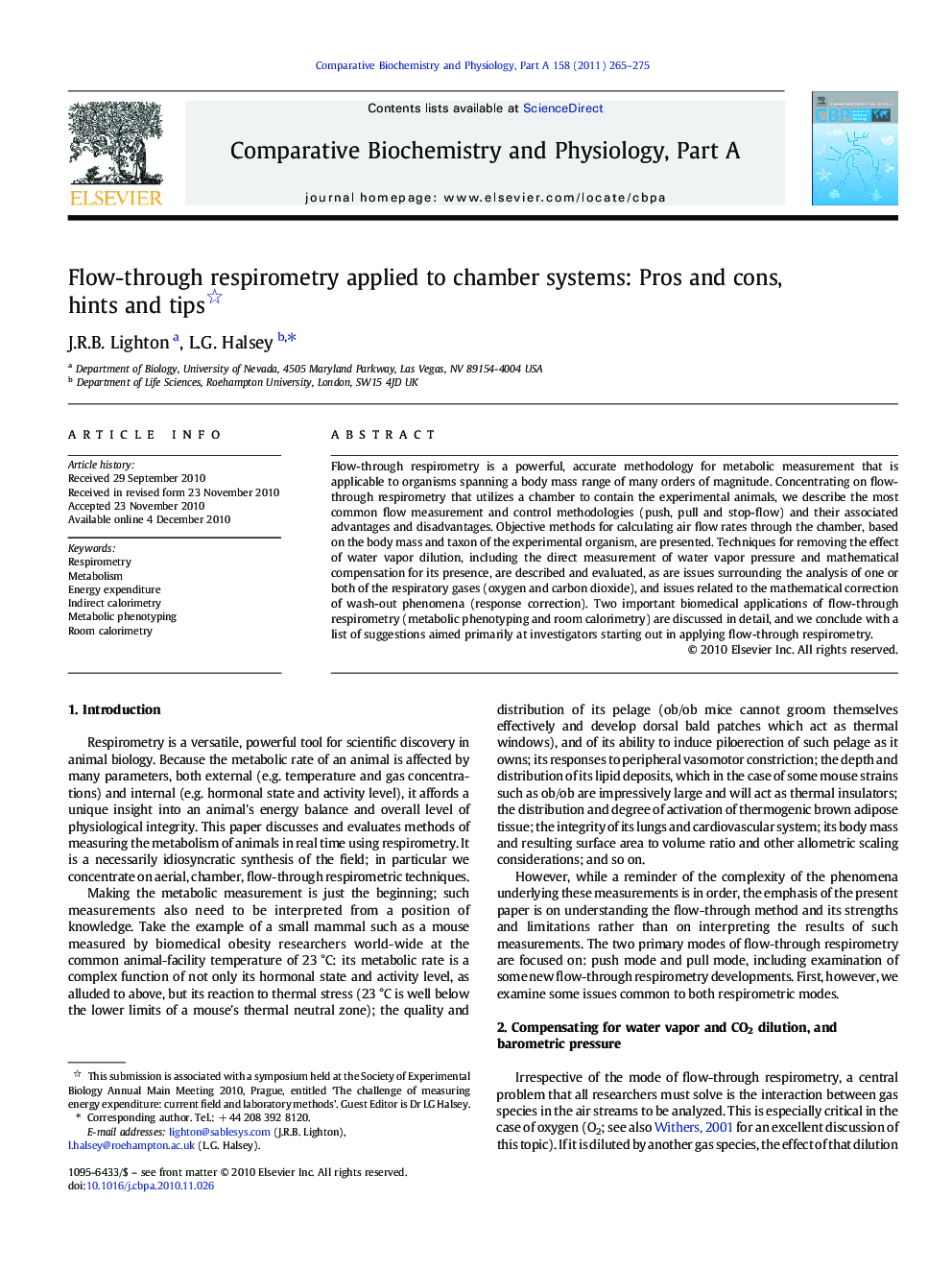| Article ID | Journal | Published Year | Pages | File Type |
|---|---|---|---|---|
| 1972803 | Comparative Biochemistry and Physiology Part A: Molecular & Integrative Physiology | 2011 | 11 Pages |
Flow-through respirometry is a powerful, accurate methodology for metabolic measurement that is applicable to organisms spanning a body mass range of many orders of magnitude. Concentrating on flow-through respirometry that utilizes a chamber to contain the experimental animals, we describe the most common flow measurement and control methodologies (push, pull and stop-flow) and their associated advantages and disadvantages. Objective methods for calculating air flow rates through the chamber, based on the body mass and taxon of the experimental organism, are presented. Techniques for removing the effect of water vapor dilution, including the direct measurement of water vapor pressure and mathematical compensation for its presence, are described and evaluated, as are issues surrounding the analysis of one or both of the respiratory gases (oxygen and carbon dioxide), and issues related to the mathematical correction of wash-out phenomena (response correction). Two important biomedical applications of flow-through respirometry (metabolic phenotyping and room calorimetry) are discussed in detail, and we conclude with a list of suggestions aimed primarily at investigators starting out in applying flow-through respirometry.
